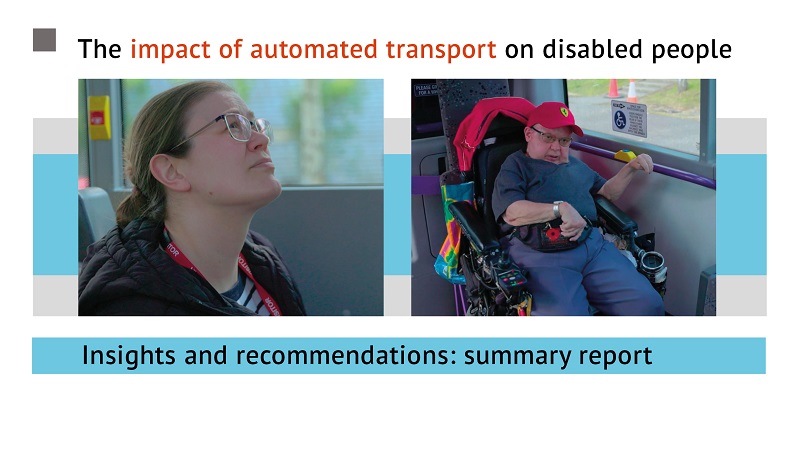In the development of automated transport, there is a need to consider accessibility. History shows that accessibility of new technology and services often slips down the agenda in favour of rapid deployment and a need to generate return on investment. To help prevent this scenario, this project had the objective to ‘support the development of inclusive automated transport technologies and services by understanding the needs, perceptions, and challenges faced by disabled people’. The following research questions were considered:
- Identify the benefits of automated transport for disabled people
- Identify and prioritise the challenges faced by disabled people with automated transport
- Identify the extent to which accessibility is currently being considered in the design and development of automated transport technologies and services, including any good practice examples
- Identify design principles and recommended solutions to support the design, development and implementation of inclusive automated transport
These research questions were explored through an evidence review, stakeholder engagement with disability organisations, automated technology developers and transport operators, focus groups and a survey with disabled people and usability trials of two existing automated services. The research was focused on Level 5 automation, with some discussion of Levels 3 and 4 (as set out in the SAE Autonomy scale). We explored both private and shared automated services. The focus was on services which transport people rather than goods.
This summary report captures the key findings and recommendations from the main report PPR2050.

